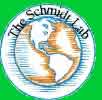|
|
Methane
exchange between the atmosphere and subalpine wetland and unsaturated soils
was evaluated over a 15-month period during 1995-1996. Four vegetation community
types along a moisture gradient (wetland, moist-grassy, moist-mossy, and
dry) were included in a 100 m sampling transect situated at 3200 m elevation
in Rocky Mountain National Park, Colorado. Methane fluxes and soil temperature
were measured during snow-free and snow-covered periods, and soil moisture
content was measured during snow-free periods. Tehran of mean measured fluxes
through all seasons (a positive value represents CH4 efflux to
the atmosphere) were: 0.3 to 29.2 mmol CH4m-2d-1
wetland area; 0.1 to 1.8 mmol CH4m-2d-1
moist-grassy area; -0.04 to 0.7 mmol CH4m-2d-1,
moist-mossy area; and -0.6 to 0 mmol CH4m-2d-1,
dry area. Methane efflux was significantly correlated with soil temperature
(5 cm) at the continuously saturated wetland area during snow-free periods.
Consumption of atmospheric methane was significantly correlated with moisture
content in the upper 5 cm of soil at the dry area. A model based on the
wetland flux-temperature relationship estimated an annual methane emission
of 2.53 mol CH4m-2 from the wetland. Estimates of
annual methane flux based on field measurements at the other sites were
0.12 mol CH4m-2, moist-grassy area; 0.03 mol CH4m-2,
moist-mossy area; and -0.04 mol CH4m-2, dry area.
Methane fluxes during snow-covered periods were responsible for 25, 73,
23, and 43% for the annual fluxes at the wetland, moist-grassy, moist-mossy,
and dry sites, respectively. |
|
|







